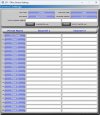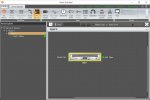I have picked up a few Crown I-Tech 4000s amps on eBay in the past two years to drive my passive subs and mains. You can usually find them around $1000. They are 15 year old amps and so far so good. My "oldest" one has almost 20,000 hours on its "odometer" 
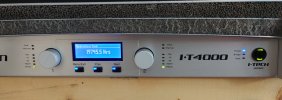
The engineering specs are as follows:
The power amplifier shall meet or exceed the following performance criteria. Input sensitivity for rated output: adjustable in 0.1V steps from 1.4V to 7.75V. Voltage gain: 37.1 dB to 22.2 dB. Rated output with both channels driven in Dual mode with 0.35% THD (20 Hz to 20 kHz): 1800 watts per channel into 2 ohms, 2000 watts per channel into 4 ohms, and 1250 watts per channel into 8 ohms. Rated output in Bridge-Mono mode with both channels driven at 0.35% THD (20 Hz to 20 kHz): 3600 watts into 4 ohms and 4000 watts into 8 ohms. Frequency Response at 1 watt, 20 Hz to 20 kHz: ±0.25 dB. Signal to Noise Ratio below rated power, A-weighted: greater than 105 dB. Total Harmonic Distortion at full rated power: less than 0.35%. Intermodulation Distortion (60 Hz and 7 kHz at 4:1, from full rated output to –35 dB): less than 0.35%. Damping Factor (20 Hz to 100 Hz): greater than 5000. Crosstalk (below rated power, 20 Hz to 1 kHz): greater than 80 dB. Common Mode Rejection (20 Hz to 1 kHz): greater than 50 dB. DC Output Offset: less than ±3 mV. Input Impedance (nominal): 20 kilohms balanced, 10 kilohms unbalanced. Maximum Input Level: +15 dBu or +21 dBu, depending on input sensitivity. Latency (analog, digital inputs): 1.13 mS analog, 1.81 mS digital (96 kHz).
To configure the beast you really need to use the Audio Architect software that is available for free from the Amp's web page (along with various documentation) You will need to connect the amp to your network via Ethernet and install the software on a Windows PC. Here are some of the configuration screens you will have to deal with:


The engineering specs are as follows:
The power amplifier shall meet or exceed the following performance criteria. Input sensitivity for rated output: adjustable in 0.1V steps from 1.4V to 7.75V. Voltage gain: 37.1 dB to 22.2 dB. Rated output with both channels driven in Dual mode with 0.35% THD (20 Hz to 20 kHz): 1800 watts per channel into 2 ohms, 2000 watts per channel into 4 ohms, and 1250 watts per channel into 8 ohms. Rated output in Bridge-Mono mode with both channels driven at 0.35% THD (20 Hz to 20 kHz): 3600 watts into 4 ohms and 4000 watts into 8 ohms. Frequency Response at 1 watt, 20 Hz to 20 kHz: ±0.25 dB. Signal to Noise Ratio below rated power, A-weighted: greater than 105 dB. Total Harmonic Distortion at full rated power: less than 0.35%. Intermodulation Distortion (60 Hz and 7 kHz at 4:1, from full rated output to –35 dB): less than 0.35%. Damping Factor (20 Hz to 100 Hz): greater than 5000. Crosstalk (below rated power, 20 Hz to 1 kHz): greater than 80 dB. Common Mode Rejection (20 Hz to 1 kHz): greater than 50 dB. DC Output Offset: less than ±3 mV. Input Impedance (nominal): 20 kilohms balanced, 10 kilohms unbalanced. Maximum Input Level: +15 dBu or +21 dBu, depending on input sensitivity. Latency (analog, digital inputs): 1.13 mS analog, 1.81 mS digital (96 kHz).
To configure the beast you really need to use the Audio Architect software that is available for free from the Amp's web page (along with various documentation) You will need to connect the amp to your network via Ethernet and install the software on a Windows PC. Here are some of the configuration screens you will have to deal with:
- Source Routing:
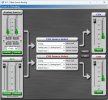
- Input processing:
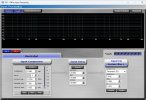
- Speaker processing:

- Various amp monitoring:
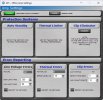
- Speaker monitoring:
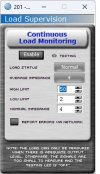
- And to test all this, the amp has various build-in signal generators:


